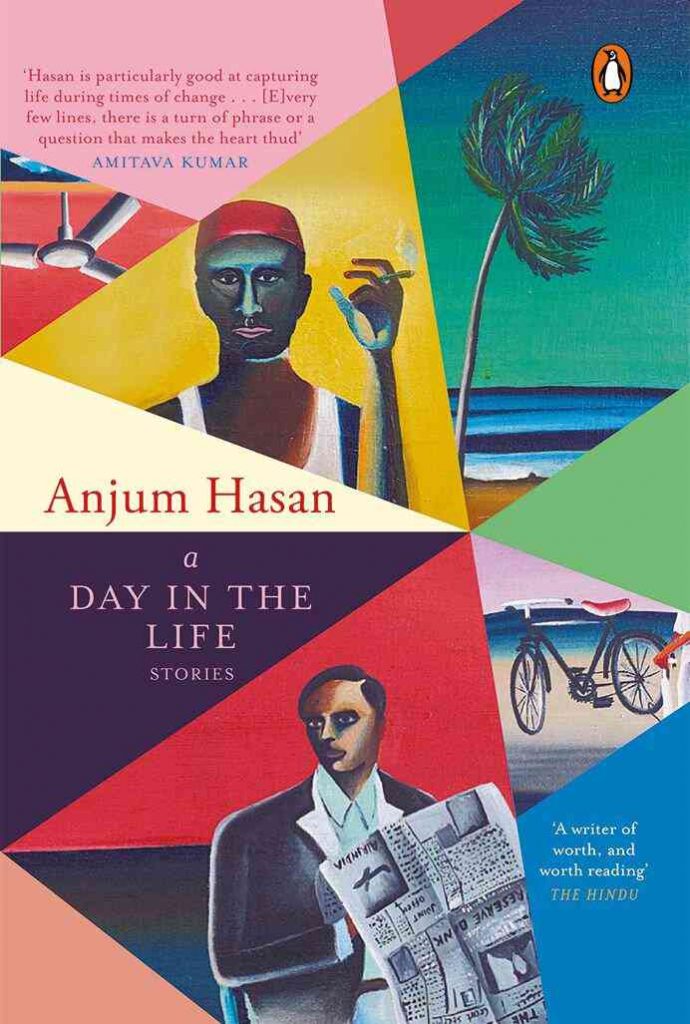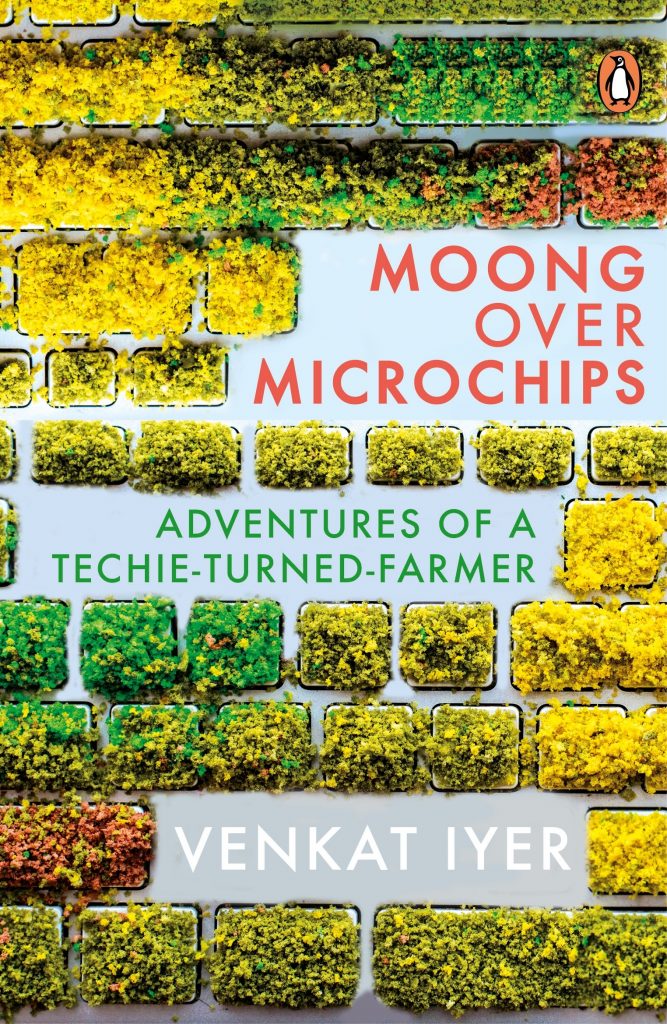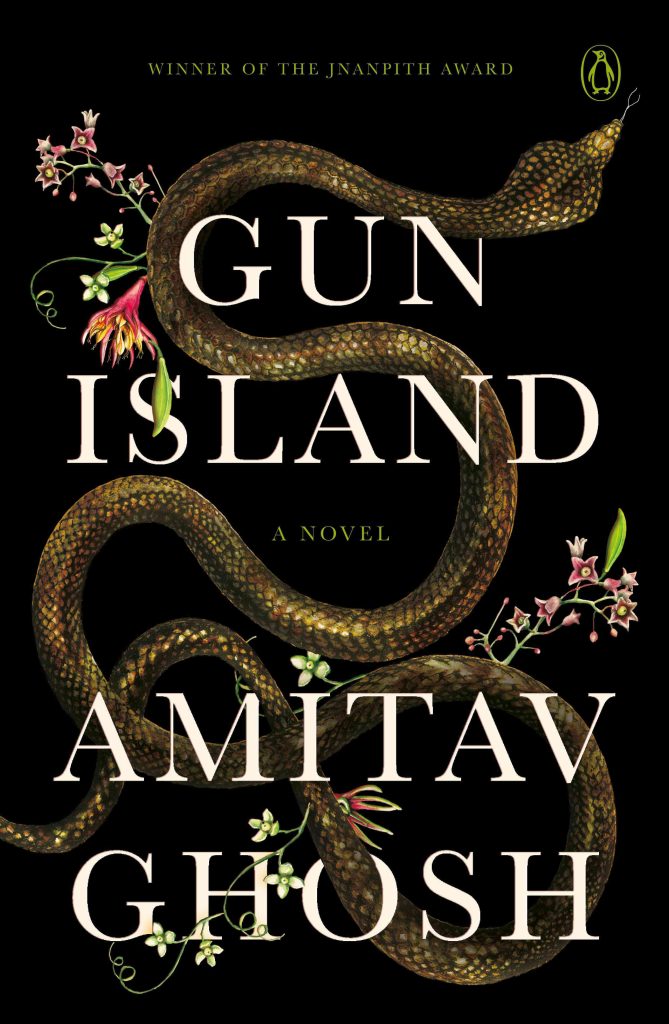As a book designer, my job is to reveal and yet, to hide. To intrigue but not to give away. To raise curiosity but not to let slip the answer too easily. Treading that balance between clarity of thought and embracing ambiguity is the liveliest part of my work.
“How much is too much?” I have realised that knowing the answer to this question makes all the difference. In other words, a book designer’s job is a meditation of inspiration and observation, of conditions and contexts.
In my recent TedX talk, “Disaster and Hope”, on a similar theme, I gave the audience a glimpse into my life in designing. I shared my vision and passion in creating a vocabulary of design for the book covers I work on and the nuances of my job as a designer and an image maker. After the video went up, I received a lot of compliments, criticism, and queries, but the responses left me wondering whether what people heard in those 15 minutes was not a very compressed version of my design process. The tip of the iceberg that I confront on a daily basis at my work desk.
Above all, I missed the smell of freshly printed ink, the feel of the paper, editorial corrections on the mechanicals, and finally the joy of holding the advance copies!
Like most of you, I too have been working from home since early March 2020. During the lockdown, I have been often asked if it has impacted my work, my approach towards design, or my emotional and design capabilities. While I didn’t have any easy answers to that, it got me thinking. The questions stayed with me and at nights, I could sense the designerly discourse churning within me.
This essay is essentially a collage of my innermost thoughts and experiences, while working alone at my desk at home during the lockdown. The nature of my job is based on print, which means I need to see work in progress and the final results in the printed form. Due to the lockdown, none of this was possible as we had to manage everything online and the remote location didn’t allow working with hardcopies. Above all, I missed the smell of freshly printed ink, the feel of the paper, editorial corrections on the mechanicals, and finally the joy of holding the advance copies!
While doing all this, I also have to consider if I am being innovative enough in the cover lettering, and creative enough in the imaging. Am I bringing some novelty to the cover while retaining the essence of the narrative?
As I delved deeper into this enquiry, I realised that whether it’s work or real life, the real battle during designing a cover is the one you fight with yourself. And you have to do it, all alone. Every time I sit down to start a new project, the real dilemma that I face while designing is totally mine. There is a lot of internal push and pull between the variables: Which fonts would work and why? Should the cover visual be illustrative, photographic, typographic or something totally unexpected? What should be the second layer of visual style? How should the image be placed on the cover?
While doing all this, I also have to consider if I am being innovative enough in the cover lettering, and creative enough in the imaging. Am I bringing some novelty to the cover while retaining the essence of the narrative? These are some of the inner dialogues I have to sift through in order to answer these questions to myself. Sometime it’s fun, sometimes it’s not. But mostly, it’s a solitary exercise.
If the creative gods are kind I can find a solution instantly, but other times it can take days to arrive at something tangible. The thought of it even consumes me in my sleep.
Oftentimes in this lonely space, I find myself going back to my roots of design education at the National Institute of Design. The formative training at NID has instilled in me that if you are thirsty, you dig the well yourself and then get water from it. You may fail and fall, but you will have to get up and tread your own path. If you have to deliver an original solution to the world, then you should know how to live with the problem first, embrace it and try to live with that ambiguity.
There have been many times in my professional journey that I’ve struggled for days to find an answer…an appropriate solution to a design problem while I pass my day, looking very calm on the outside. But, just below the surface there is chaos. A beast of thought constantly rages in my mind, lonely and craving for a solution. This beast is restless and has no shape. If the creative gods are kind I can find a solution instantly, but other times it can take days to arrive at something tangible. The thought of it even consumes me in my sleep.

For example, I came up with the geometrical element on the cover of Anjum Hassan’s A Life in a Day in a dream. Sometimes I also find myself comparing fonts in my sleep. With too many solutions available for every design issue, there is basically no end to these creative thoughts. They just don’t follow a proper schedule. For instance, I saw paddy fields from an airplane window while I was working on Venkat Iyer’s Moong Over Microchip. Next morning when I landed at my office desk, an idea had clicked and it made to the final cover.

Design is many things put together for me. While there are definitive rules and theories to support design problems, the final decision has largely been based on personal aesthetic sense or feeling in my experience. To support and arrive at that feeling, I feel I have been a creator, critic, conceptualiser, presenter, lawyer, market and salesmen. My way of working has always been intuitive, getting my hands dirty, a lot of trial and error, which I feel is the best way forward for me when I’m creating.
I try out as many options I need to, in order to get it “right” — something that not only pleases me but also suits the design brief. In my opinion, there is something quite idyllic about that feeling or intuition, as you call it. Basically, you just know when it is “right”.
The argument for believing something is good is subjective. Personal opinions and emotion are what guide anything anyway. It is very rare in public discussions for someone to say, “Yes, indeed, I haven’t thought about that, it makes me change my mind.” I think that is because we are driven by emotions and not by rules or intellect. I think we like a lot of things for reasons we cannot really explain. It’s a feeling, as Kim Hiorthoy wrote in ‘Acting on What Matters’.

For Amitav Ghosh’s Gun Island, my publisher briefed me that the central theme of the book is a king cobra and they would like it on the cover. GOD HELP ME, I have terrible phobia of reptiles! After a few sleepless nights, I came up with a solution: an illustration of a king cobra drawn in the botanical style! The final illustration came out so beautifully I even managed to hold the printed book in my hands!
I believe that the design process should involve all stakeholders and always enjoy involving the editor, publisher, sales, and the author into the overall cover design process. During the lockdown, the human element is what I miss the most while working remotely. For me, the best way to research for a book cover is to talk to people. Imagine them as a human library. That degree of involvement is definitely missing over online conversations and emails.
My biggest asset, I believe, is the skill to see what others can’t. What others can’t believe because they aren’t perhaps trained to fall and fail and pick the pieces to build again and again. That is why sometimes, when people loosely use design for arts, it makes me uncomfortable.
Furthermore, I used to attend practically all art and photography exhibitions (in India and abroad) and cultural events to find inspiration and make new contacts. Visiting the Summer Show at The Royal Academy of Arts in London almost became a yearly ritual, but this year, after everything came to a standstill, I couldn’t satiate my curiosity just by watching it online.
If I had to define my current design practice, I’d consider myself incomplete as my most important tool is still missing from the toolkit. My biggest asset, I believe, is the skill to see what others can’t. What others can’t believe because they aren’t perhaps trained to fall and fail and pick the pieces to build again and again. That is why sometimes, when people loosely use design for arts, it makes me uncomfortable.
Writer Maya Angelou once said: “I’ve learned that people will forget what you said, people will forget what you did, but people will never forget how you made them feel”. I subscribe to this truly, because these innate feelings are very important to me in my life and work.
Being with oneself is assuring, beautiful, and addictive. Have you ever wondered that when you close a book, the printed words also have a secret social life — the spacing, the leading, and the darkness of the ink. Without you and me, they are lonely too.
To offer a new voice to your design engagement, you first need to hear your own voice. And to hear that, you need to experience silence and solitude. When you are quiet, you listen not just to the noise but also to the sounds in between. I embrace loneliness with a belief that it can open up new ways of understanding the world.
A designer needs to have the sensitivity and skill to distil all the information and make sense of it as a unique resource. So if you’re using certain fonts, some will remain faithful to you like old lovers, and some just won’t work like unrequited love even after several permutations and combinations. But the dialogue in the darkness of solitude will help you choose which works best in the moment.
The silence brings in all the answers to me. It allows me to dream and dreams bring me design solutions.
Being with oneself is assuring, beautiful, and addictive. Have you ever wondered that when you close a book, the printed words also have a secret social life — the spacing, the leading, and the darkness of the ink. Without you and me, they are lonely too. Today and always.
The silence brings in all the answers to me. It allows me to dream and dreams bring me design solutions. And once you have a relationship with this loneliness, it will only be legible to you. I safeguard you in my arms, for you to not wither. Hold you tight, in this relationship called togetherness.
A cover once told a book on a rather emotional evening: “You have a story in your pages but my story is a reflection of your story. A cover shouldn’t try to dominate the written words inside, rather be a loyal guard to it. We are here to support each other in this proposition in respectful proportions.” This is my design den. And this has been the greatest gift of this lockdown.
***
The essay first appeared in Scroll.in under the series Publishing and the Pandemic curated by Kanishka Gupta.
 Ahlawat Gunjan has a master’s degree in graphic design from The Glasgow School of Art, UK. Previous to that he spent a semester at Indiana-Purdue University, USA, focusing on design thinking, innovation and leadership. He is a graduate of the National Institute of Design, Ahmedabad. He is Creative Head at Penguin Random House, India, and lives in New Delhi.
Ahlawat Gunjan has a master’s degree in graphic design from The Glasgow School of Art, UK. Previous to that he spent a semester at Indiana-Purdue University, USA, focusing on design thinking, innovation and leadership. He is a graduate of the National Institute of Design, Ahmedabad. He is Creative Head at Penguin Random House, India, and lives in New Delhi.
